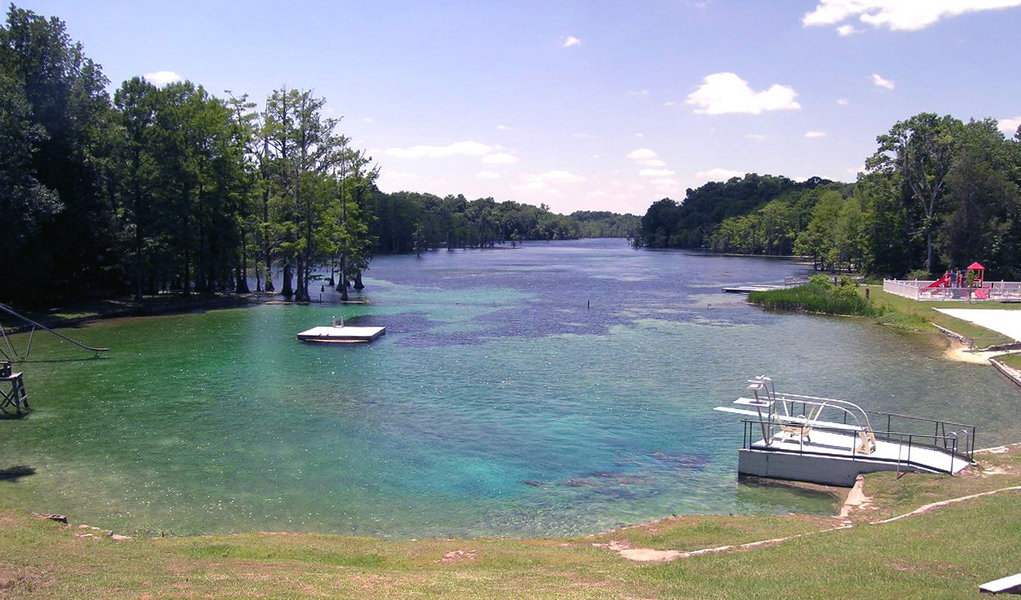One question that is frequently asked by individuals reviewing domestic wastewater treatment facility data is:
What is the difference between capacity and flow?
This short article provides guidance on the significance and use of these terms.
Flow
“Flow” is the easier of the two terms to grasp. It simply is the actual amount of water flowing by a particular point over some specified time. In most cases, we report flow in terms of millions of gallons per day. You will see this unit of measurement abbreviated as “MGD.”
The operators of a domestic wastewater treatment facility maintain records of the daily volumes of wastewater treated, the volumes of reclaimed water sent to reuse systems, and the volumes of treated wastewater (effluent) that may be disposed of (perhaps by discharge through an outfall pipe into a surface water). The operators submit monthly reports to DEP listing these average flows in MGD on each day of the month. In addition, the daily flow values are averaged to determine the average flows during the month (expressed in MGD).
Capacity
“Capacity” represents the ability of facilities to move or process water.
Consider a pump. When the pump is turned on, it has the ability to move a set amount of water within a particular time period. Again, we will use the units MGD. A pump having a capacity of 2 MGD is capable of moving 2 million gallons of water during 24 hours (one day). If that pump is turned on for only six hours (1/4 of a day) on a particular day, the actual amount of water moved will be 1/4 of what the pump could have moved over a full 24 hours. During the day that the pump ran for 6 hours, the pump actually moved 0.5 million gallons of water, and the average flow rate over the entire day (all 24 hours) was 0.5 MGD (0.5 million gallons divided by 1 day).
All permits issued by DEP for domestic wastewater treatment facilities identify the “permitted capacities” of the treatment facilities and any reuse or effluent disposal facilities. Here the term “permitted capacity” represents the maximum amount of water that the facility is allowed to treat or to direct to a particular reuse or effluent disposal system. Consider a domestic wastewater treatment plant having a permitted capacity of 3 MGD. The permit may also identify a reuse system and a surface water discharge point. The permit will specify the capacities of both the reuse system (assume that it has a capacity of 2.5 MGD) and the surface water discharge (assume its capacity is 2 MGD). The permitted capacities place limits on the operation of these treatment, reuse, and disposal facilities. This treatment facility must not process more than 3 MGD. No more than 2.5 MGD of reclaimed water may be released to their reuse system. In a like manner, no more than 2 MGD may be discharged to the surface water.
First, note that the capacities of the reuse and disposal systems need not equal the capacity of the treatment facility. In our hypothetical example, the treatment facility has a capacity of 3 MGD while the reuse and disposal systems total 4.5 MGD. However, the capacities of the combined reuse and disposal systems normally should equal or exceed the treatment plant capacity to ensure that the wastewater being processed can go somewhere.
Our hypothetical treatment facility has a permitted capacity of 3 MGD. This represents the maximum amount of wastewater that it may treat during a day. It is quite possible that on some day, this treatment facility may only receive 2 MGD of untreated wastewater for treatment. The actual flow to be treated is 2 MGD.
Flows may be significantly less than the permitted capacity, particularly shortly after a treatment facility is constructed. This results from the fact that utilities will design their facilities looking 5, 10 or more years into the future. It may take a number of years to plan, design and build domestic wastewater facilities. Hence, the wise utility builds today to serve future population in their service area. When a new 3-MGD capacity treatment facility is opened, the initial flows available for treatment may only be 1 MGD. As the population in the facility’s service area grows, the flows coming into the treatment facility will increase. By the end of the design period, flows being treated will begin to approach the treatment facility’s permitted capacity. As this occurs, it becomes time to plan for and construct expanded facilities, such that the permitted capacity remains larger than the actual flow being treated.
Summary
- Flow is the actual amount of water being treated, moved or reused. Flow frequently is expressed in MGD.
- Capacity represents the ability to treat, move or reuse water. Typically, capacity is expressed in MGD.
- Normally, the flow will be less than the capacity.


